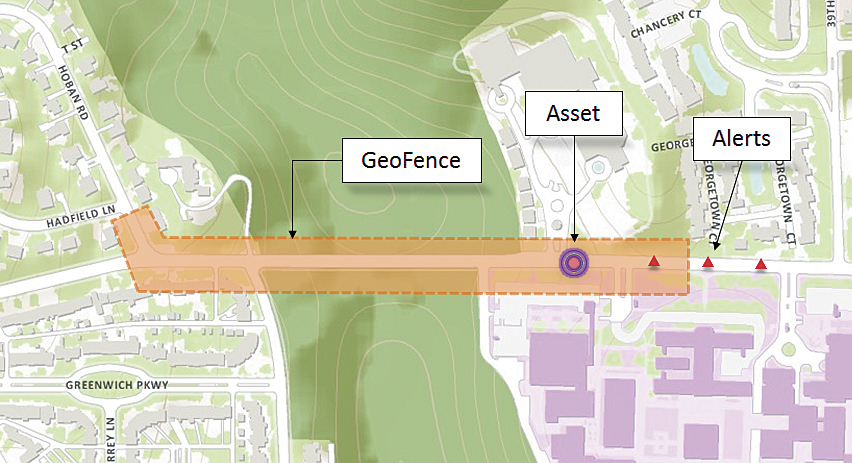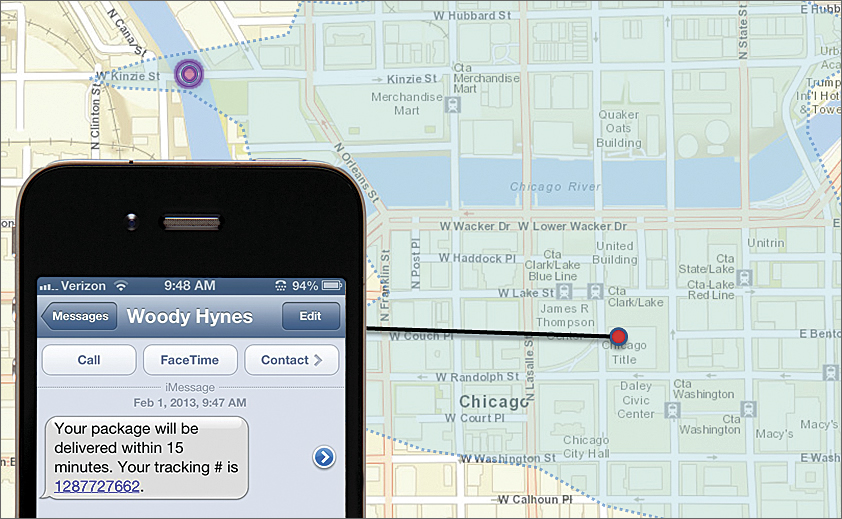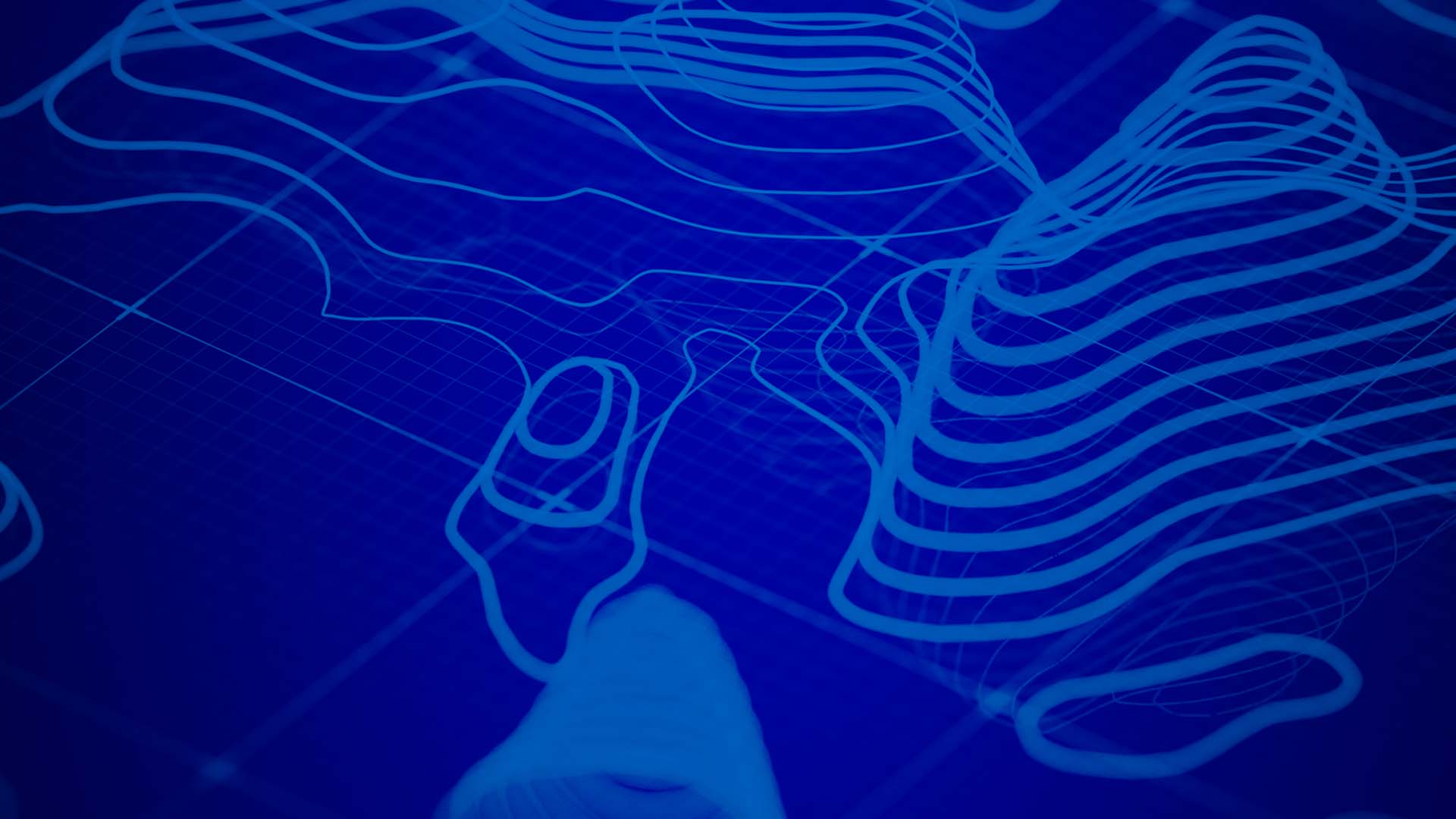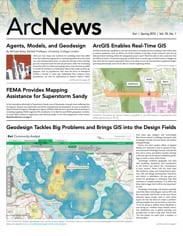ArcGIS includes the capability to use real-time data in everyday decision making. Users will be able to answer questions, such as, Where are all the vehicles in my fleet at this moment? and Are my field personnel working within the designated project area? They’ll be able to tell a customer that the delivery truck is 10 minutes away, get notified when a certain type of vehicle enters a dangerous area, alert the five nearest responders when an incident occurs, be warned when equipment begins operating abnormally, and even be able to monitor lightning strikes.

ArcGIS GeoEvent Processor is a new ArcGIS for Server extension. It gives users the ability to connect to real-time data streams from a wide variety of sensors, perform continuous processing and analysis of those data streams, and send relevant information to users or other systems.
Connecting to Real-Time Data Streams
ArcGIS GeoEvent Processor for Server delivers the flexibility to incorporate virtually any source of real-time data into a GIS. It contains ready-to-use input connectors for the most common data stream sources, including built-in GPS connectors for Sierra Wireless and Trimble, and specific data streams for air traffic control, vessel positions, and others. GeoEvent Processor also provides an extensibility framework for creating custom connectors. Connectors can be configured to work over common transport protocols, including UDP, TCP, and XMPP, and tap into vehicle telematics used by CompassCom, networkfleet, and many others.
Processing Data Streams
GeoEvent Processor is designed to process and filter events in real time. This means that it can be set up to receive large amounts of data and extract from it just the information that is relevant to users. For example, GeoEvent Processor can be configured to receive real-time weather and pollution measurements from a network of sensors and trigger alarms when specific pollution or wind thresholds are met. Or it can be used to detect and highlight vehicles that are speeding, stopped for a long period of time, or moving away from a predefined route. GeoEvent Processor provides a simple visual environment for configuring and processing data streams. It allows users to easily remove noise and filter the data into the most important and actionable information.
Making Real-Time Information Available to Decision Makers and Customers
GeoEvent Processor provides the capability to share real-time information with users and other systems. Examples include sending an e-mail or instant message to a person when a particular alarm is triggered and writing incidents to a log file or sending messages to an enterprise messaging system.

ArcGIS applications, including the new Operations Dashboard for ArcGIS, can receive and display the output of GeoEvent Processor on a map. ArcGIS applications running on web browsers, smartphones, and tablets can also take advantage of GeoEvent Processor output. For example, a construction company can track expensive equipment and alert operators and supervisors when a piece of equipment moves outside the project area. The location of the equipment can be tracked in real time on a map at the headquarters and from a smartphone in the field. Alerts can be configured so an instant message or e-mail is issued to the appropriate persons when needed.
In another example, a city police department can maintain a common operating picture of units in the field, analyze their movement patterns, and then optimize their patrol routes.
Or a company can improve customer service by alerting customers that their package will be delivered within the next 15 minutes.
A New Paradigm for Geofencing
A geofence is a virtual perimeter for a real-world geographic area. In the case of GeoEvent Processor, the GIS server is detecting and using geofences to alert the user or an authority when the device approaches, enters, and leaves the geofenced area. GeoEvent Processor provides the ability to use any map feature as a geofence. This means that geofences can be defined using jurisdictional areas, such as a city boundary, or an area defined through analysis, such as a high-crime area, an area determined by specified drive time, or a hand-drawn polygon. For example, an operations center may want to monitor vehicle assets as they approach, pass through, and leave hazardous areas defined by spatial conditions, such as flooding or suspicious behavior. These GIS-based geofences will help end users deliver more accurate, real-time assessments of live events.
Conclusion
ArcGIS provides users with exciting new capabilities to incorporate real-time information into decision making. ArcGIS users can manage the flow of real-time data by collecting data streams from sensors; processing and analyzing this data in real time to determine the course of action; and finally presenting relevant information to users as a map via an e-mail, instant message, etc. These capabilities are delivered through the new ArcGIS for Server extension, ArcGIS GeoEvent Processor for Server.
GeoEvent Processor is sure to be a game changer in many industries, including fleet and asset management, telematics, defense and intelligence operations, public works, public health, forestry, mining, water and petroleum management, public safety and emergency management, transportation, and utilities.
To learn more about GeoEvent Processor for Server, request a demonstration; to evaluate the extension, contact your local Esri office or Esri distributor. ArcGIS GeoEvent Processor for Server is expected to be released with the next update to ArcGIS for Server.

